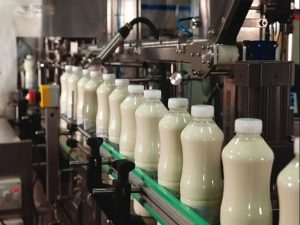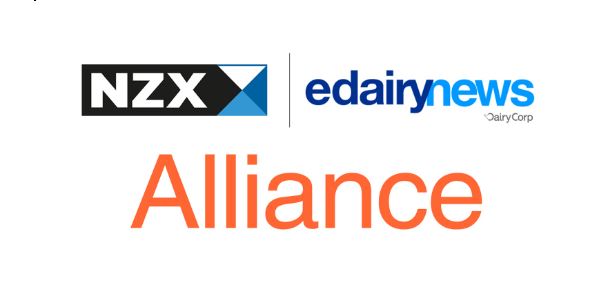
Dairying and Animal Husbandry has emerged as one of the most important sub-sectors in Indian agriculture in recent times. Today, dairy is the single largest agricultural commodity, contributing about 5% to the national economy and has grown at 6.4% CAGR over the last 5 years. Dairy industry employs over 100 million in workforce of which 80 million are farmers with majority comprising of the landless, small-scale and marginal segment. Amongst these farmer households, it is the women producers who carry out majority of the work on a dairy farm, thereby comprising a large part of the sector’s workforce. These farmers are directly responsible for organizing and controlling the country’s soaring bovine population (Cattle, Buffalo, Mithun and Yak), recorded to be about 303.76 million1 producing approximately 198.4 million tonnes of milk annually. The dairy sector therefore is a key contributor of employment and income for millions of households in the country, especially the rural regions.
Even though India is a recognized global leader in the dairy industry, except for a few private players and cooperatives, the sector largely remains unorganized2. Owing to this factor the small and marginal dairy farmers continue to face fundamental challenges with regards to cattle productivity at the grass-root level that restrict holistic growth for the sector. According to FAO, despite being the world’s largest milk producer, India’s per animal milk productivity is very low, about 2.5-3 litres per cattle3. Recently at a conclave, Shri Parshottam Rupala, Minister of Fisheries, Animal Husbandry and Dairying emphasized the need for technological interventions to bring crucial developments into the sector especially for improving productivity4. He highlighted that the ‘need of the hour’ is to focus on breed improvement and to increase productivity to 10 litres per cattle5. As there is a direct correlation between adopting technology to increase productivity, this brings the industry to a crucial standpoint demanding access to solutions driven by reliable data sources for most effective management of the dairy cattle.
An award winning, farmer driven agri-tech start-up firm – Mooofarm, has been actively engaged in enabling the much needed ‘white-tech revolution’ for the dairy industry. With regards to organizing dairy farm practices, Mooofarm has developed an innovative android based mobile application that aggregates data to conveniently bring key dairy services at the farmer’s fingertips. This unified app is well-integrated and packed with valuable features catering to the pivotal requirements of the farmer that can reach their doorstep with ease. Other services offered by Mooofarm include Cattle Induction and access to Artificial Insemination to allow safe and secured breeding. The cattle are first inducted into the Mooofarm ecosystem via a scientific procurement mechanism where each of the cattle goes through multiple checkpoints via cattle inspection and expert verification applications. Thus, ensuring breed quality and health. Going forward, enabled by tech, farmers can gain access to crucial cattle data aggregated into a single window such as age, breed, movement, heat progress, milk yielding capacity, nutritional requirements, feed status and so forth to enable improved decision-making for value adding farm management capabilities.
Looking at the dairy ecosystem from a holistic lens, it is evident that there is immense potential for every dairy farmer with any size of dairy operations to become independent and a profitable entity individually, provided they have access to tech-enabled solutions to create worthy assets that can improve profitability. In addition to increasing the productivity of milching animals, other critical areas of the dairy farm management business also demand focused solutions. As every effort ultimately boils down to improving the quality of milk, cattle nutrition received from careful consumption of feed and fodder also directly impacts productivity, along with healthy and hygienic habitation.
With an established network of advisory support services provided by Mooofarm, popularly known as E-Dairy Mitra, MoooSaathi and MoooSabha features on their app, is accessible to both men and women farmers on their mobiles. The features help farmers get instant access to valuable information to receive direct training regarding best practices to manage dairy farms, availing treatments via on-call veterinary services, and connect with other farmers for improved networking opportunities. This is certainly a holistic tool to propel and empower even the women workforce who are largely responsible for major dairy practices at the farm. Another important element that needs consideration as it plays a crucial role is feed management. The government has recognized the dire need for ration balancing to improve cattle productivity6 as it aids in reduction of methane (GHG) gas that is emitted from cattle excreta, and other by-products. Mooofarm facilitates ration balancing which is deeply embedded into its feed formula and is further developing more innovative feed solutions that can reduce methane gas emissions from cattle dung. The firm is collaborating for strategies to convert cattle excreta into manure and biogas which can further increase farmer profitability, and lead to lesser carbon emissions as well. To make dairy farming business sustainable, monitoring and management of its impact on the environment should become a priority for the sector. Consider the impact once Indian farmers start using such innovative mechanisms driven by technology- overall carbon emissions can come down by a huge margin, driving India closer to its net zero goals.
“While technologies such as RFIDs, IOT devices for cattle management businesses, drones for farm monitoring and others are finding ground, I still strongly believe that if you give simple technologies in the hands of a farmer through smartphones, you are laying the foundation of a tech-driven circular economy, with unprecedented scope of growth. This, in turn, will feed in the $5 trillion economy goal by 2025, set up by Prime Minister Narendra Modi”, said Param Singh, CEO, Mooofarm.
In accord with Prime Minister Modi’s vision of an ‘Atmanirbhar Bharat’, the self-reliant growth of farmers in the animal husbandry and dairying sector is pivotal. It is evident how Mooofarm is determined to continue its mission to fulfill its brand promise – ‘Ab dairy munafa hoga aasaan’ and is well aligned to continue this growth trajectory of making an ‘Atmanirbhar Kisaan’ by deploying solutions that combine skills, agri-business, and technology in the most efficient and profitable way possible. The firm’s focus to create well integrated tech-enabled ‘smart farms’ in the dairy sector can serve as a holistic ground to improve both farmer’s experience and trust in the entire dairy ecosystem. With consistent support of all the associated key stakeholders in the dairy industry, most importantly the Government, Mooofarm is sure to create a win-win scenario for the welfare of everyone in the long-run, ultimately realizing its contribution to key sustainable development goals including, (2) Zero Hunger (5) Gender Equality (8) Decent Work and Economic Growth (12) Responsible Consumption and Production and (13) Climate Action.
















